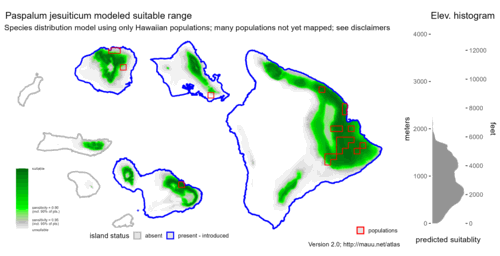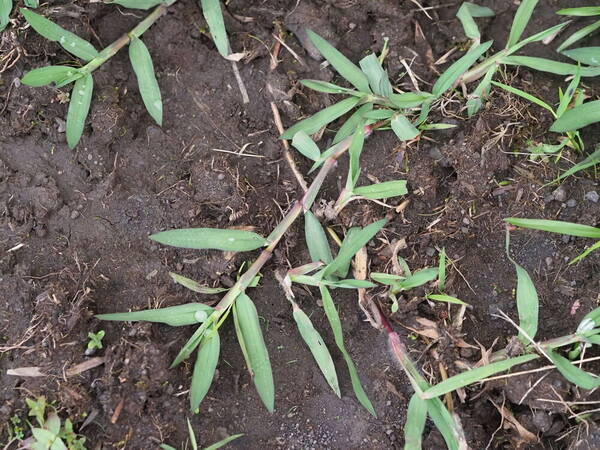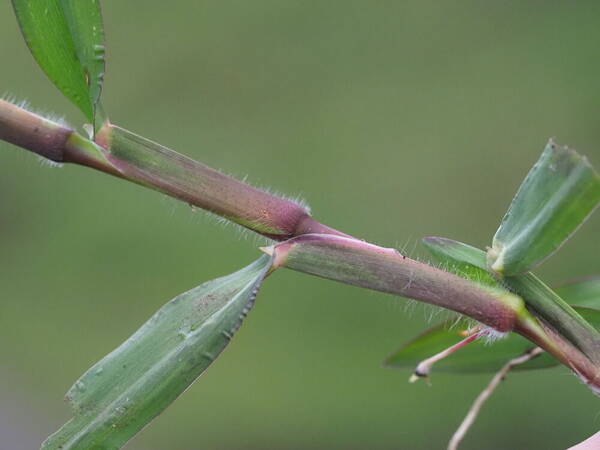Info
Subfamily: Panicoideae
Genus etymology: Paspalum = "millet" [Greek] some species are used as cereals
Species etymology: jesuiticum = "belonging to Jesuits" [Latin] refering it its origin in mission areas under the Jesuit order in Brasil, Paruguay, and Argentina
Photosynthetic type: C4 (warm season)
Nativity: naturalized - unclear
First recorded in Hawaiʻi: 2003
Map


Inflorescence










Plant









Habit

Spikelets







Landscape


Description
Perennial, creeping, with vigorous intravaginal innovations that arise from the rooted nodes; flowering culms ascending, 2–3-noded, 40–60 cm tall; blackish and glabrous nodes. Sheaths shorter than the internodes, grooved, hairy; ligule membranous, ochraceous, glabrous, 2–3 mm long; leaf blades flat, linear-lanceolate, 6–12 cm long by 6–10 mm wide, glabrous, with long, white, papillose based hairs scattered on both sides, usually with partially wavy edges. Panicles 7–8 cm long, formed by 7–8 greenish branches 3–6 cm long, divergent when fruiting, with a pubescent axis endowed with a few long hairs in the axils. Rachis mostly glabrous, dorsoventrally compressed, 1.6–1.8 mm wide, bearing 4 series of briefly pedicellate spikelets; pedicels compressed, glabrous with denticulate-scabrous sides. more or less than 0.5 mm on one spikelet, somewhat less on the other. Spikelets paired, ovate lanceolate, 2.8 mm long by 1.5 mm wide, flat on the front face, convex on the back; lower (front) glume absent, upper 3-veined, barely mucronate, glabrous, similar in size to the spikelet; sterile lemma similar, 3-veined, as long as glume, without palea; fertile lemma ovate-lanceolate, 2.5 mm long, with a greenish or straw-colored back, finely dotted; palea embraced within. Bisexual flower with three yellow-orange anthers of 1–1.4 mm; lodicules 2, cuneiform, 0.4 mm.
(Description source: Parodi, L.R. & Nicora, E.G. 1969. Estudios sistemáticos sobre las Gramineae-Paniceae argentinas y uruguayas. Darwiniana 15(1): 65–111. )